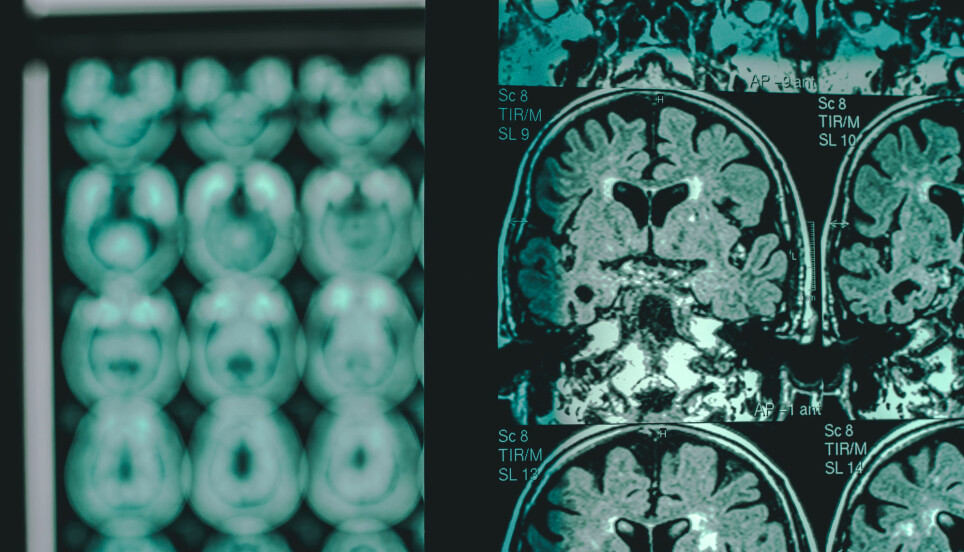
A blood test can detect Alzheimer's five years before symptoms appear
The new Swedish blood test is described as a breakthrough in Alzheimer's research.
Alzheimer's disease is the most common form of dementia. But when a patient begins to show symptoms, the breakdown processes in the brain have been ongoing for years. For some, decades may have passed since the onslaught of the disease.
That means when a patient is given a diagnosis, the brain has already undergone irreparable damage.
Researchers have for years tried to develop a simple method for figuring out who is at risk. If they can then receive treatment that works, this could slow further development of the disease.
Now, researchers at the Sahlgrenska Academy at the University of Gothenburg have developed simple blood tests and published three studies that document how accurate they are, according to forskning.se (link in Swedish).
Breakthrough
“Yes, this is a breakthrough in Alzheimer's research,” says Tormod Fladby, a professor at Oslo University Hospital (OUS), to sciencenorway.no. He has studied early diagnosis and treatment of Alzheimer's disease for many years.
The blood test could be a way to screen a large number of people before there is any clinical evidence for suspicion. Doctors could use it to find out who is in the early stages of the disease, or is at risk, Fladby suggests.
Until now, doctors have only been able to diagnose patients and people at risk by using spinal fluid samples and brain scans. But these tests are intrusive and expensive, which limits access to them.
“The cost and lack of equipment and personnel has made these tests impossible to use to screen large groups of people who don’t have specific symptoms, Fladby said.
In the past, the only way to accurately diagnose Alzheimer's was through an autopsy.
Elevated levels detected long before symptoms appeared
The disease is a consequence of high levels of amyloid and tau proteins in the brain.
The researchers took blood samples from 1,100 Swedish inhabitants over a number of years. They used their test to measure the presence of phosphorylated tau protein (p-tau181).
They then compared these blood tests with individuals who were subsequently diagnosed with Alzheimer's.
The test revealed a strong link between elevated levels of this specific tau protein in the blood and the loss of nerve cells and impaired cognitive ability in Alzheimer's disease several years later.
Enables testing of drugs
But the test doesn’t mean that society will immediately have a treatment for everyone, Fladby said. Instead, the test is an important step on the road to further research.
“Being able to make early diagnoses and identify patients who have incipient problems is a necessary step in finding an effective treatment,” Fladby said.
Thus, the next step could be to test treatment on at-risk patients, and compare the effect against control groups — which can take many years.
Five years before symptoms appeared
Kaj Blennow is chief physician and professor at the section for psychiatry and neurochemistry at the University of Gothenburg, and one of the researchers behind the test.
He told sciencenorway.no that the tests could detect elevated levels of the tau protein as early as five years before patients actually showed symptoms of Alzheimer’s.

The study participants included elderly individuals without symptoms, people with memory impairment and elderly individuals with dementia.
The people who were diagnosed with Alzheimer's were on average 70 years old when they were tested.
“But there is a great deal of variation as to when people get dementia. Some people get it in their 70s, others in their 80s,” says Blennow.
Introduced in Sweden last year
The one blood test that the researchers developed has been in clinical use in Sweden since 2020. It measures NFL, a marker for nerve cell damage in the brain.
The other measures phosphorylated tau, a marker of changes in the brain that are specific to Alzheimer's. Blennow expects this test to be approved for clinical use during 2021.
“It’s easy to send blood samples, and we also have the capacity to analyse samples from neighbouring countries such as Norway,” says Blennow.
Blennow says it’s most relevant for a person to be tested if they notice that their memory is bad. Those who are tested can then be offered experimental treatment with promising drugs.
“There are several different, promising drugs in development. One has been submitted for approval to the US Food and Drug Administration,” he said.
Before these drugs can be used on a large scale in Norway and Sweden, however, they have to be approved by each country's state drug agency.
Blood tests being developed in Oslo
Tormod Fladby at OUS is also working on developing a blood test-based diagnostics.
“We use immune cells in the blood, monocytes and macrophages, and see how these interact with Alzheimer's-related proteins. We believe this will also be a simple and useful method,” he said.
The reason why they and their colleagues in Sweden are making great progress now is that the technology for measuring small amounts of protein has become more advanced, he said.
Coping with a diagnosis
But a diagnosis of Alzheimer’s, or of being at risk of developing Alzheimer’s, can be a difficult one.
“These patients will have an increased risk of developing dementia, but it is not a one hundred percent risk, and it can be affected,” Fladby said.
Several studies have measured exactly how patients handle these kinds of difficult messages.
“The results are uplifting — most patients don’t become depressed, but make changes that have to do with lifestyle. They become more social, spending time with family,” Fladby said.
But healthcare professionals must exercise judgement and assess who can cope with this kind of diagnosis before they administer the test. They may want to exclude patients who already suffer from depression, Fladby said.
Translated by: Nancy Bazilchuk
References:
A. Moscoso et al.: Time course of phosphorylated-tau181 in blood across the Alzheimer’s disease. Summary Brain, 30 November 2020.
T. K. Karikari et al.: Diagnostic performance and prediction of clinical progression of plasma phospho-tau181 in the Alzheimer’s Disease Neuroimaging Initiative. Molecular Psychiatry, 26 October 2020.
A. Moscoso et al.: Longitudinal Associations of Blood Phosphorylated Tau181 and Neurofilament Light Chain With Neurodegeneration in Alzheimer Disease. JAMA Neurology, 11 January 2021.
———
Read the Norwegian version of this article on forskning.no

































